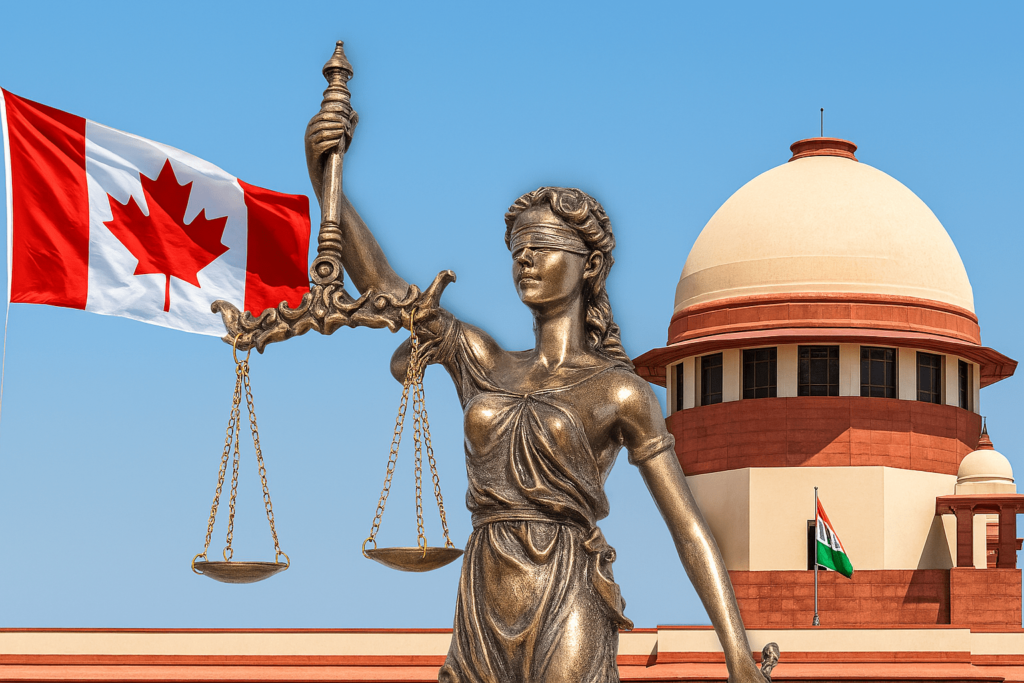For many Non-Resident Indians (NRIs) living in Canada, ties to India remain strong through property ownership, business interests, and family relationships. However, these ties can sometimes give rise to disputes that require resolution through Indian courts. Civil litigation for NRIs may become necessary in matters such as property disputes, inheritance issues, contractual breaches, or recovery of money.
The question often asked is: how can Canadian NRIs initiate civil litigation in Indian courts? The answer lies in understanding the Indian Code of Civil Procedure, 1908 (CPC), related statutes, and judicial processes that govern such cases.
This article provides a structured overview of the legal framework, step-by-step procedures, and practical considerations for Canadian NRIs seeking to begin civil litigation in India.
Understanding Civil Litigation in India
Civil litigation in India refers to legal proceedings where private individuals or entities seek enforcement of rights or resolution of disputes not involving criminal law. Common areas include:
-
Property disputes: Partition, succession, or unlawful possession.
-
Contractual disputes: Breach of agreements or business contracts.
-
Family disputes: Maintenance, guardianship, or divorce matters.
-
Monetary disputes: Recovery of debts or damages.
-
Consumer disputes: Complaints against service providers or builders.
Civil matters are adjudicated under the Code of Civil Procedure, 1908, which prescribes the procedure for filing, trial, and execution of decrees.
Jurisdiction of Indian Courts
When an NRI from Canada initiates litigation in India, the choice of court depends on jurisdiction.
1. Territorial Jurisdiction
A case must be filed in the court within whose geographical limits the property or cause of action arises.
2. Pecuniary Jurisdiction
Different courts are empowered to hear disputes based on the monetary value involved. For example, District Courts and High Courts handle matters exceeding specified amounts.
3. Subject-Matter Jurisdiction
Some matters, such as family law cases or consumer complaints, may fall under special tribunals or forums created by specific statutes.
Relevant Law: Sections 15–20 of the Code of Civil Procedure, 1908 determine the proper court for filing suits.
Legal Standing of NRIs in Indian Courts
Canadian NRIs have the same right as resident Indians to approach Indian courts. However, practical difficulties often arise due to their absence from India. The law addresses this through the Power of Attorney (POA) mechanism.
-
An NRI can execute a General or Special Power of Attorney in favor of a trusted relative or representative in India.
-
You must notarize this POA in Canada, have the Indian Consulate attest it, and register it in India under the Registration Act, 1908 (if it involves immovable property).
-
The attorney-holder can then file and pursue litigation on the NRI’s behalf.
Step-by-Step Process for Canadian NRIs to Initiate Civil Litigation
Step 1: Identifying the Cause of Action
The first step is to establish the legal grounds of the dispute—whether related to property, contract, inheritance, or money recovery. The nature of the dispute determines the type of suit.
Step 2: Determining Jurisdiction
Identify the court having jurisdiction as per CPC rules. Filing in the wrong jurisdiction can delay proceedings.
Step 3: Drafting and Filing the Plaint
A plaint is the formal written complaint initiating a civil suit. It must include:
-
Names and addresses of parties.
-
Statement of facts.
-
Cause of action.
-
Relief sought (damages, possession, injunction, etc.).
The plaintiff must pay the requisite court fees when filing the plaint, as required under the Court Fees Act, 1870.
Step 4: Representation through Advocate or Attorney
Canadian NRIs usually appoint an advocate in India to conduct the case. A Power of Attorney holder can also liaise with the lawyer and appear in procedural matters.
Step 5: Issuance of Summons
After admitting the plaint, the court summons the defendant to appear and respond.
Step 6: Written Statement by Defendant
The defendant files a written statement (reply) contesting the claims.
Step 7: Evidence and Trial
-
Examination and cross-examination of witnesses.
-
Submission of documentary evidence (e.g., property documents, contracts).
Step 8: Judgment and Decree
The court delivers judgment and passes a decree granting or denying the relief sought.
Step 9: Execution of Decree
If the defendant does not comply voluntarily, the court can execute the decree by attaching property or using other enforcement measures.
Key Indian Laws Governing Civil Litigation
-
Code of Civil Procedure, 1908 (CPC): Primary law for civil suits.
-
Indian Evidence Act, 1872: Governs admissibility of evidence.
-
Court Fees Act, 1870: Prescribes court fee payable.
-
Registration Act, 1908: Relevant for property and POA documents.
-
Limitation Act, 1963: Specifies time limits for filing suits.
Practical Considerations for Canadian NRIs
-
Time Zone and Communication: Digital communication helps NRIs stay updated, but time differences must be managed.
-
Document Authentication: Documents executed in Canada must be apostilled or attested by the Indian Consulate.
-
Avoiding Delays: Indian civil cases are known for lengthy timelines; effective representation and proper filing reduce delays.
-
Mediation and Arbitration: In some cases, alternative dispute resolution under the Arbitration and Conciliation Act, 1996 may be faster.
-
Costs: Court fees, advocate fees, and incidental expenses must be factored in.
Limitations and Timeframes
Under the Limitation Act, 1963, every civil suit must be filed within a prescribed time:
-
Property disputes: Usually 12 years.
-
Contractual disputes: 3 years from breach.
-
Money recovery: 3 years from the date of debt becoming due.
Failing to act within these periods may bar the claim.
FAQs on Civil Litigation for Canadian NRIs
1. Can Canadian NRIs file civil cases without traveling to India?
Yes. By executing a valid Power of Attorney, NRIs can authorize a representative in India to pursue litigation.
2. Is online filing of cases available for NRIs?
Many High Courts and District Courts now allow e-filing of cases, but physical appearances may still be necessary for certain stages.
3. Can Canadian court judgments be enforced in India?
Yes, Section 44A of the CPC allows Indian authorities to enforce judgments from certain foreign courts, including Canadian courts if they are notified as reciprocating territories. However, Indian courts may still review these judgments to ensure they comply with Indian law.
4. What if the dispute involves family property in India?
NRIs can file civil suits for partition, succession, or eviction in Indian courts. The courts usually have jurisdiction where the property is located.
5. How long does a civil case take in India?
Timelines vary widely. Simple matters may conclude in a few years, while complex property disputes may take longer.
For Canadian NRIs, initiating civil litigation in India requires understanding of jurisdiction, procedure, documentation, and timelines. Indian courts provide the same access to justice for NRIs as they do for residents, but navigating the process effectively often depends on proper preparation and representation.
By following the Code of Civil Procedure, 1908, complying with Indian evidence and registration requirements, and utilizing Power of Attorney provisions, Canadian NRIs can assert their rights in Indian courts without being physically present at every stage.
While the process may seem complex, awareness of legal procedures and statutory timelines is the key to pursuing successful civil litigation in India.

